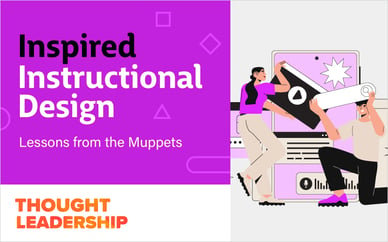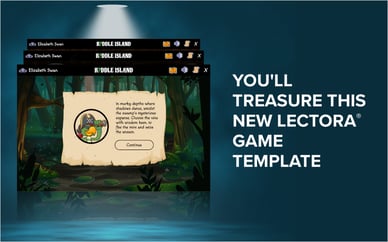Developing a new eLearning project is an exciting challenge every time—that is until deadline pressure threatens to drown out all your creative energy! Don’t give up; we’re about to throw you a lifeline—how to create a storyboarding template!
In this webinar, eLearning Brothers resident usability expert Josh Bleggi shared the systematic approach to storyboard creation we use here at eLearning Brothers for producing our Rockstar Learning Model courseware. You can use this process to dramatically speed up your own storyboard creation, and keep your creative focus where it belongs—on authoring effective and engaging eLearning.
We use a Storyboard Design System to create storyboarding templates for our safety and cybersecurity off-the-shelf courses.
What’s a Design System?
A collection of reusable components, guided by clear standards, that can be assembled together to build any number of applications.
-Designbetter.co
A Design System is like a more filled out style guide for your eLearning courses.
The benefits of using a Design System for storyboarding include:
- Enables creative freedom
- Saves time
- Reduces friction
- Encourages collaboration
So what is a Storyboard Design System?
A living collection of templates guided by clear standards, that can be assembled together to design any number of courses in a streamlined, uniform, and accessible manner.
Here at eLearning Brothers, we use Google Slides to create our storyboard design system because it’s easy for our team members to collaborate on storyboards, but you can use any application that works for you.
Our baseline storyboard file includes our course structure and framework (intro, learning objectives, individual sections, and so on), and then each course’s content is plugged into these layouts.
Here’s an example of the different slides of our storyboard design system:
This system allows us to be faster in our storyboarding and development process.
The keys to building a good storyboard design system are focusing on a template that is repeatable, scalable, and usable. Keep in mind your authoring tool’s constraints and what your team structure is as you create your storyboard design system.
4 Ways to Set Up Your Storyboard
- Overlay
- Wireframe
- Mock Up
- Prototype
Jump to 28 minutes into the video to see Josh break down these 4 storyboarding methods.
Ready to rock? Sign up for a free trial of the eLearning Brothers Authoring Suites to get access to all the tools, templates, assets and more that you need to develop engaging eLearning.








